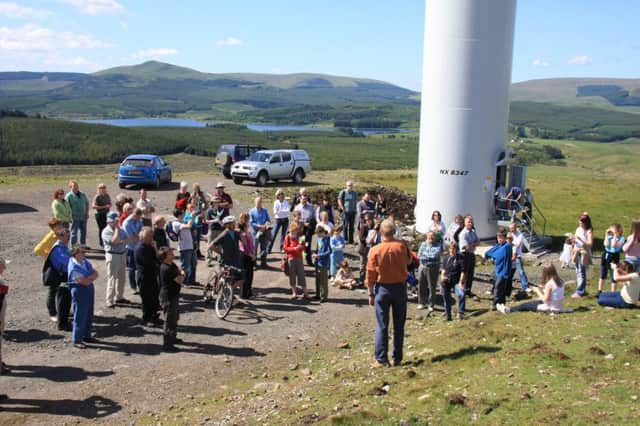Ilona Amos: Get the low-down on do-it-yourself green power


On Tiree, a notoriously windy outpost, a 75m-tall wind turbine known affectionately as Tilley produced enough electricity in July to supply 50 homes for a year. The profits from the scheme, around £150,000 a year, are invested in the local community – a not inconsiderable sum on an island with just 653 inhabitants.
In a completely different set of circumstances, in Scotland’s capital, Edinburgh Community Solar Co-operative has begun a project to install, own and manage solar PV systems on the roofs of 25 public buildings owned by the local city council. These include schools, community centres and leisure facilities, and will carry a combined generating capacity of approximately one megawatt – making it the largest scheme of its kind in the UK.
Advertisement
Hide AdAdvertisement
Hide AdCuts by Westminster in support for all forms of renewable energy generation since 2015 have damaged the sector’s growth, but community scale energy has been particularly hard-hit.
The Feed-in Tariff scheme, through which projects under five megawatts are supported, has seen particularly drastic cuts. This means it will be challenging for some initiatives, particularly small-scale hydro or wind, to compete in the energy market in future.
But new ways of capturing and using power are providing some relief, according to industry experts. Energy storage – such as creating ponds to collect water to drive hydro schemes or using batteries or hydrogen conversion to store electricity across all technologies – allows power produced from “intermittent” renewable sources to be used all day every day, not just when the sun is shining, rivers are in full flood and the wind is blowing.
And although the income renewables schemes receive for electricity produced has been cut, they say on-site use remains an option. Systems that can use most of their power rather than exporting it to the grid can still be worth it financially.
So where should you turn if you’re humming and hawing over whether to develop your own locally-owned power scheme? Firstly get in touch with Community Energy Scotland, a charity that offers communities practical help with green power development and energy conservation.
There’s also Local Energy Scotland, which provides free advice, regional support and financial assistance to communities wishing to benefit from renewable energy and administers Scottish Government funding for such schemes.
And if you want a first-hand account of the dos and don’ts of setting up your own local operation, take a look at Community Energy: A Guide to Community-based Renewable Energy Projects, a new book written by one of the founders of an acclaimed scheme in Stirlingshire that has just marked its tenth anniversary – and notched up around £500,000 in income for the Fintry community.
Author Gordon Cowtan was one of four volunteers who dreamed up the project, which began with a single turbine in a new wind farm in the Campsie hills. Earnings from the turbine have allowed the community to invest in a raft of beneficial moves, including a district heating network for 25 park homes.
Gordon will be talking about his experiences and outlining Fintry’s latest plans at the Scottish Renewables Solar Conference and Exhibition, which takes place in Edinburgh tomorrow.